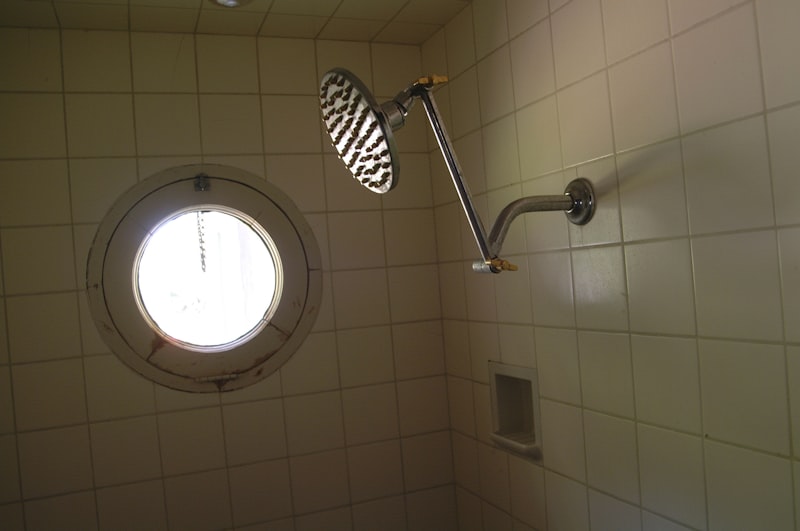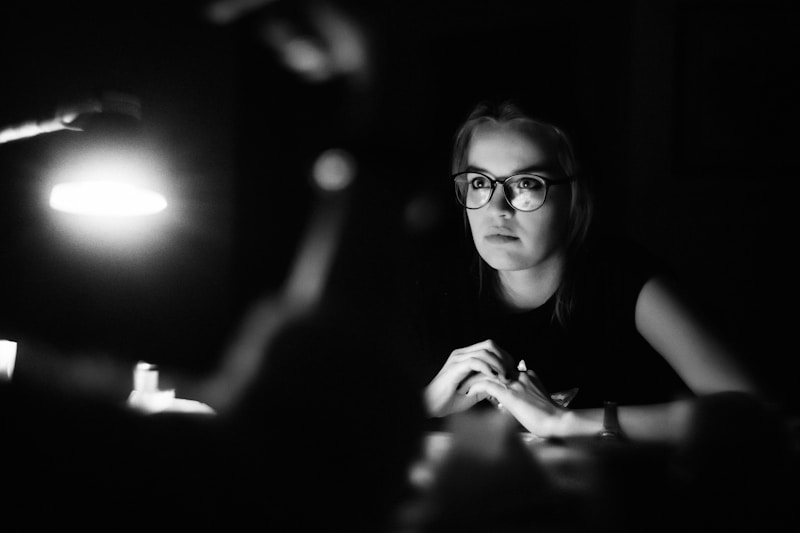Cultural Influences on Lighting Preferences: Unveiling the Connection
Lighting is an essential element in both residential and commercial spaces, significantly impacting mood, functionality, and aesthetics. However, lighting preferences can vary dramatically across different cultures. This article aims to explore the various cultural influences on lighting preferences, looking at factors such as tradition, lifestyle, color psychology, and modern trends. Through this examination, we will better understand how culture shapes our visual environments.Understanding Lighting PreferencesLighting can affect perceptions of space, warmth, and serenity. Different cultures have historically developed unique approaches to lighting based on their environment, social norms, and technological advancements. Hence, recognizing these cultural influences can help designers, architects, and homeowners create spaces that resonate with users on a deeper level.The Role of Culture in Lighting ChoicesCultural background plays a pivotal role in our lighting preferences. For instance, in Western cultures, where bright spaces are often associated with productivity and energy, individuals may prefer brighter, cooler lights, especially in work environments. Conversely, in Eastern cultures, where values such as calmness and serenity are prioritized, softer, warmer lights are favored to create a tranquil atmosphere.Key Cultural Influences on Lighting PreferencesCultural AspectInfluence on LightingTraditionTraditional lighting sources, such as candles, lanterns, and family heir...
Illuminate Your Visuals: The Ultimate Guide to Lighting for Photography and Videography
Understanding Lighting in Photography and VideographyIn the world of photography and videography, lighting plays a vital role in determining the quality and impact of your visuals. Whether you are capturing a serene landscape, a lively event, or a professional interview, the right lighting can transform ordinary shots into breathtaking views. This article delves into the fundamentals of lighting for photography and videography, offering insights that can take your creative projects to new heights.The Importance of LightingLighting is not just about visibility; it enhances texture, shapes, colors, and mood. In photography, the way light interacts with your subject can evoke emotions and create phenomenal scenes. Similarly, in videography, lighting sets the tone and keeps the audience engaged. Below we summarize why lighting matters:AspectPhotographyVideographyVisibilityEnhances clarity and detailsSets the viewer's focusEmotionCreates atmospheresShapes narrative moodTextureBrings out detailsCreates depthColorRepresents realityEvokes reactionsTypes of LightingThere are various types of lighting that photographers and videographers utilize. Understanding these will help you choose the right kind for your projects.1. Natural LightNatural light, often revered for its beauty, emanates from the sun. It offers a soft, flattering light that is ideal for many types of photography and videography. The golden hour, which occurs shortly after sunrise and before sunset, provides warm hues t...
Ultimate Guide to Designing Energy-Efficient Lighting Layouts
Introduction to Energy-Efficient Lighting LayoutsIn today's world, energy efficiency is not just a buzzword; it's a necessity. With increasing energy costs and growing concern over environmental impacts, the need for designing energy-efficient lighting layouts has become more significant than ever. This article will explore various strategies to create lighting designs that save energy, reduce costs, and enhance aesthetics.Understanding the Importance of Energy EfficiencyDesigning energy-efficient lighting layouts not only contributes to a lower carbon footprint, but it also leads to significant financial savings. As energy bills rise, businesses and homeowners alike are looking for innovative ways to cut costs. According to recent studies, up to 40% of a building's energy consumption can be attributed to lighting alone. Thus, optimizing lighting design is crucial for both environmental and economic reasons.Key Benefits of Energy-Efficient LightingReduced Energy Costs: Energy-efficient lighting can drastically reduce electricity bills.Increased Lifetime of Fixtures: Efficient lighting systems tend to have longer lifespans, reducing replacement costs.Improved Aesthetics: Well-designed lighting can enhance the mood and appearance of a space.Environmental Impact: Lower energy consumption contributes to reduced greenhouse gas emissions.Principles of Designing Energy-Efficient Lighting LayoutsThe design of an energy-efficient lighting layout involves several fundamental principles...
Discover the Best Lighting for Your Bathroom: A Comprehensive Guide
When it comes to bathroom renovations or improvements, the lighting choice can oftentimes be overshadowed by fixtures, tiling, and other aesthetic elements. Yet, selecting the best lighting for your bathroom is a crucial decision that impacts the ambiance, functionality, and even safety of the space. In this article, we will explore various types of bathroom lighting, their advantages, tips for installation, and best practices to ensure that your bathroom feels welcoming and looks stunning.Understanding Bathroom Lighting TypesBefore diving into selecting the best lighting for your bathroom, it's essential to understand the various types of lighting available. Each type serves distinct purposes and can significantly influence the overall look of your space.Type of LightingDescriptionAmbient LightingGeneral lighting that provides overall illumination in the bathroom.Task LightingFocused lighting that aids in specific tasks, such as shaving or applying makeup.Accent LightingLighting used to highlight architectural features, artwork, or decor elements.Best Lighting Choices for Your Bathroom1. Ambient LightingAmbient lighting is your bathroom's foundational light source. It ensures that the space is well-lit and inviting. Recessed lights and ceiling-mounted fixtures are excellent choices for this purpose. Using warm LED bulbs can create a soothing atmosphere, making it inviting for relaxation.2. Task LightingThe best lighting for bathrooms where tasks like skincare, shaving, or ma...
The Ultimate Guide to Lighting Showrooms in NYC
If you're an interior designer, homeowner, or simply a lighting enthusiast, exploring lighting showrooms in New York City (NYC) can be an exhilarating experience. NYC is home to some of the most innovative lighting designers and a vast array of showrooms showcasing products ranging from contemporary fixtures to ornate classical lighting solutions. In this article, we'll delve into the best lighting showrooms in NYC, what to expect when visiting them, and some tips to maximize your lighting shopping experience.Why Choose NYC for Lighting Showrooms?New York City is a hub for art, fashion, and design, which makes it a natural place for top-notch lighting showrooms. The city's diverse aesthetic influences—from modern minimalist to luxury ornate—provide a plethora of choices. Here, you can explore high-end designer fixtures, innovative eco-friendly options, and custom-made solutions that cater to various themes and functions.Key Considerations When Visiting Lighting ShowroomsWhen visiting lighting showrooms in NYC, it's essential to keep a few factors in mind: Design Aesthetics: Know your style preferences which will help narrow down your choices. Functionality: Understand the purpose of your lighting—whether it's for ambient, task, or accent lighting. Budget: Set a budget before exploring showrooms to avoid overspending. Scale: Consider the size of the space where the lighting will be installed to ensure scale and proportion fit well.Top Lighting Showrooms in NYCHere,...
Illuminate Your Kitchen: Unique Pendant Lights for Kitchen Island
When it comes to enhancing the aesthetic and functionality of your kitchen, the right lighting plays a crucial role. Unique pendant lights for kitchen islands not only serve as a source of illumination but also act as a statement décor piece. In this article, we will explore various styles, materials, and installation tips for pendant lights, ensuring your kitchen is as inviting as it is functional.The Importance of Pendant Lights in Kitchen DesignPendant lights can add character and charm to any kitchen. Here are a few reasons why you should consider them: Visual Interest: Unique designs draw attention and create a focal point in your kitchen. Task Lighting: Provides direct light for tasks such as chopping, prepping, or reading recipes. Atmosphere Creation: The right lighting can set a warm and inviting mood for family and guests.Styles of Unique Pendant LightsWhen selecting pendant lights for your kitchen island, consider these popular styles:StyleDescriptionIndustrialFeatures raw materials like metal and glass, often with exposed bulbs for a rustic look.Modern MinimalistClean lines and simple forms that enhance contemporary spaces.Vintage/RetroOffers nostalgic charm with designs reminiscent of past decades, often with intricate details.FarmhouseWarm and inviting designs, often utilizing wood or wrought iron elements.ChandeliersLuxurious and elegant, they can transform a kitchen into a sophisticated dining space.Materials to ConsiderThe material of your pendant lig...
Illuminate Your Space: The Ultimate Guide to Kate Spade Lamps
If you’re looking to add a touch of elegance and personality to your home decor, you may want to consider a Kate Spade lamp. Known for their chic designs and vibrant colors, Kate Spade lamps not only serve a functional purpose but also elevate the aesthetic of any room. In this comprehensive guide, we delve into everything you need to know about Kate Spade lamps – from their iconic styles and materials to how to choose the right one for your space.About Kate SpadeKate Spade was founded in 1993 and has become a symbol of modern femininity. The brand is renowned for its sleek silhouettes, playful colors, and engaging prints. Over the years, Kate Spade has expanded its offerings from handbags to home decor items, including stunning lighting solutions that reflect the brand's commitment to quality and style.Why Choose a Kate Spade Lamp?There are several reasons why a Kate Spade lamp is a worthy investment for your home: Stylish and Timeless Design: Each lamp is thoughtfully designed to blend with various decor styles, making it a versatile addition to any room. High-Quality Materials: Crafted with premium materials, these lamps are built to last and add a luxurious touch to your space. Wide Variety: From table lamps to floor lamps, Kate Spade offers a variety of options that suit different needs and spaces.Types of Kate Spade LampsKate Spade offers several lamp designs, each one unique in its style and functionality: Type Description Table Lamps Perfect for d...






